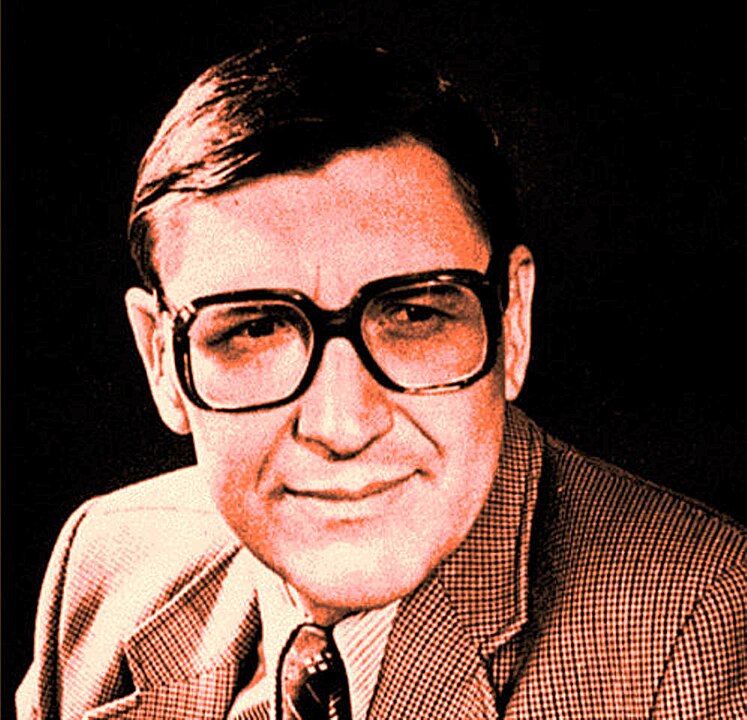Science fiction has long explored the potential of artificial intelligence. But “The Adventures of Electronik,” a 1979 Soviet children’s movie, stands out for its thought-provoking depiction of a robot yearning for humanity.
AI vs. Humans
AI, which in Russian is called искусственный интеллект, ИИ for short, has suddenly penetrated all areas of our lives. A century ago, Soviet science fiction painted an ideal world of the future in which robots freed humans from hard, mechanical work. In that ideal world, robots did hard labor, and people devoted themselves to creativity and science.

What was actually the outcome? Today, AI writes articles, paints pictures, composes music and makes movies. It also trades on the stock exchange, analyzes data, assesses risks and makes business plans. It is not movers and laborers who are out of work, but marketers, copywriters, analysts, programmers and managers. Who could have imagined that robots would take away not physical, but intellectual and creative work?
The Movie
As it turns out, somebody could. In 1979, a children’s movie called Приключения Электроника (“The Adventures of Electronik”) was released in the Soviet Union. The movie is set in an uncertain but not very distant future. Soviet professor Gromov creates a robot with artificial intelligence. The intelligent robot looks like an ordinary teenage boy, because the professor, when he created the robot’s appearance, used a random photo of a boy from a magazine. Gromov named his creation “Electronik.” Electronik learns new material very quickly, he is able to solve complex problems, and he is also strong, agile and fast.
At the same time, in an abstract “capitalist country”, a gang of thieves and their leader Stamp learned that in the Soviet Union somebody invented an ideal universal lockpick. Stamp sent his best gangster Uri to steal the amazing invention. Upon arrival, Uri realizes that the lockpick is a robot that looks like a twelve-year-old boy.
Meanwhile, Electronik develops a personality and runs away from the professor. He wants to become a real person, a human being, and prove to himself and his creator that he is not a machine that can only follow orders.
In the city, Electronik accidentally encounters his “living” prototype – that is, the boy whose photo was used by Gromov. The boy’s name is Sergei Syroezhkin.

After that Syroezhkin enjoys his freedom, walks around the city and has fun in the park, and Electronik, though not without some social awkwardness, fits into the life of a schoolboy, surprising teachers and pleasing Syroezhkin’s parents with incredible success in his studies.
All the while, Electronik is being hunted by Uri. Uri’s main problem is that he can’t find where “the button” – i.e. Elektronik’s remote control – is. You can see the rest of the story on the official channel of the Odessa Film Studio on YouTube.
Now I want to tell you why children and teenagers liked the movie so much, and why “The Adventures of Electronik” is a very unusual movie.
The People
Formally, the movie is a sci-fi adventure, but under the surface, lies a story about freedom and tyranny, critical thinking and obedience.
All the bad guys in the movie, those capitalist gangsters, are either control freaks like Stamp or obedient servants of their masters like Uri. Professor Gromov, on the other hand, gives Electronik freedom, encourages Electronik’s critical thinking, and respects his desire for independence. The professor believes that a free, critical mind is a prerequisite for becoming a person, a human being. The final song in the movie says it directly:
Но ты – человек, ты и сильный, и смелый,
Своими руками судьбу свою делай.
Иди против ветра, на месте не стой,
Пойми, не бывает дороги простой.
♪ But you’re a man, you’re strong and brave,
You make your own destiny
Go against the wind, don’t stand still,
There’s no such thing as an easy road♪
The story about artificial intelligence capable of replacing humans has turned into a story about figuring out what it means to be human. And the answer that the filmmakers proposed is: critical thinking and a free spirit.
Who were the people who, in the Soviet Union in 1979, promoted the ideas of disobedience, critical thinking, human dignity and freedom? Who taught millions of young and receptive minds to question authority and to be masters of their own lives?

The script of the movie was based on children’s stories by Evgeny Veltistov. A journalist, Sci-fi writer and screenwriter, Veltistov combined his literary work with his position as head of the ideology department of the Central Committee of the Communist Party of the Soviet Union. He was well aware of the power of words and artistic images and used it to nurture independent, open-minded and responsible citizens.
Evgeny Veltistov helped a lot of people and participated in many fascinating projects. He helped a fellow Polish sci-fi writer, Stanislav Lem, come to the Soviet Union and visit a nuclear reactor in Dubna. Once he found an elderly writer, Raisa Kudasheva, living in obscurity, her name unjustly forgotten, though every child in the Soviet Union knew her long “В лесу родилась ёлочка” (“In the forest was born a Christmas tree”). Veltistov published a small note about her life and work in the magazine where he worked as a journalist. After that she was often invited to kindergartens and schools for meetings with children, which brightened the last years of her life. Together with the bard Yury Visbor, Veltistov founded a musical illustrated magazine with flexi-disks inside Krugozor. It was a unique rich-media invention that became really popular and loved by many. He helped Sergey Kapitsa, a physicist, to launch a science TV show Очевидное – Невероятное (Obvious, but Incredible). In the 1980s he co-wrote a screenplay based on J.R.R. Tolkien’s story “The Hobbit, or There and Back Again”.
But it was the film about Electronik that made him famous. He wrote the script himself, but in close collaboration with director Konstantin Bromberg. Bromberg began his career in television with a series of films about musicians. One of his talents was to see and show the magic of creativity in the bleak Soviet reality. Together with Veltistov and the editor-in-chief of the Odessa Film Studio Galina Lazareva, he found the key to the film: the music. Evgeny Krylatov, a composer who wrote songs for Soviet films, wrote 12 songs for “The Adventures of Electronik”, and many of them became hits.
“The Adventures of Electronik” was a breakthrough for Bromberg. Soviet children loved the film. The studio received 80 thousand letters after the premiere. A few years later Bromberg made another film, which was a great success: a fantasy-musical comedy Чародеи (Enchanters). In the 1980s he began to work with CNN and directed a number of documentaries for the American channel. In 1990-s he moved to the USA to live with his daughter in Detroit. He had plans for the sequels of Electronik, but unfortunately the project never came to life.
Science fiction played with the idea of artificial intelligence long before ChatGPT, but it may seem a bit strange that a Soviet children’s author developed it into a series of novels in the 1970s. The reason why Veltistov was amused by the concept of artificial intelligence is that he was friends with Axel Berg, who played a major role in bringing the field of cybernetics to the Soviet Union. The scientist was imprisoned during Stalin’s purges, but was rehabilitated during World War II, when his knowledge was needed to build radars. After the war, he headed the Scientific Council on Complex Problems in Cybernetics and even helped found structural and applied linguistics in the Soviet Union. He and Veltistov often discussed the prospects of artificial intelligence. Berg was a prototype for Professor Gromov.
“The Adventures of Electronik” reminds us that Soviet science fiction wasn’t about spaceships and Martian landscapes. This delightful film, a product of the collaborative efforts of great minds and talents, tackled big questions about humanity, free will, and the power of critical thinking. Watching it 45 years later, in the age of AI, is a fascinating reminder of the enduring power of science fiction to spark important conversations.
P.S.: Хотите глубже погрузиться в мир Электроника? (Want to delve deeper into the world of Electronik?) There’s a podcast in Russian dedicated entirely to the movie! It likely offers fascinating insights you won’t find elsewhere. So, if you understand Russian, or are up for a listening adventure, check it out!
